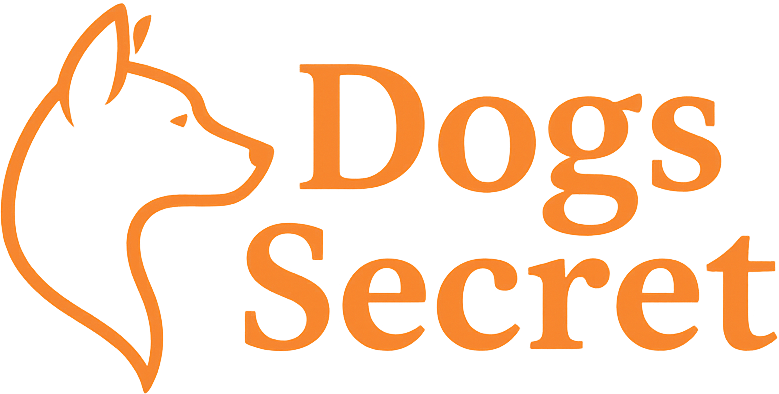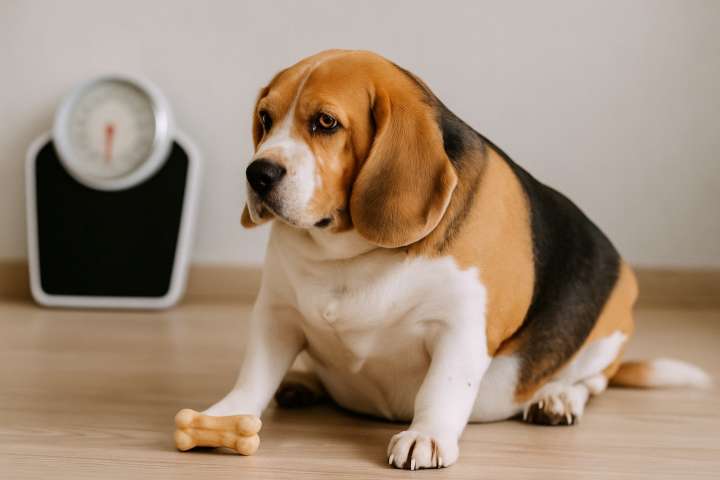Overweight dog weight loss is essential for improving your pet’s health, comfort, and lifespan. Is your dog carrying a little extra weight? You’re not alone—over 50% of dogs are overweight or obese, according to veterinary studies. While those extra pounds might seem harmless (or even cute), they can lead to joint pain, diabetes, heart disease, and a shortened lifespan.
The good news? With the right approach, you can help your dog lose weight safely and sustainably—without crash diets or stress.
This guide will show you how to create a vet-approved weight loss plan, adjust feeding routines, and support your dog with smart, healthy changes.
How to Tell if Your Dog Is Overweight
Not sure if your dog needs to slim down? Use these quick checks:
- Ribs are hard to feel under fat
- No visible waistline when viewed from above
- Sagging belly or fat pads around the chest and hips
- Tires easily during walks or play
- Struggles to groom or get up from lying down
Ask your vet for a Body Condition Score (BCS), a 1–9 scale used to assess ideal weight (5 is perfect).
Why Weight Loss Matters
Carrying extra weight puts your dog at risk for:
- Arthritis and joint damage
- Diabetes
- Respiratory issues
- High blood pressure and heart problems
- Liver disease
- Reduced mobility and energy
- Shortened lifespan (by up to 2 years)
Helping your dog lose weight isn’t just cosmetic—it’s life-extending care.
Step-by-Step Plan to Help Your Dog Lose Weight Safely
1. Visit the Vet First
Before starting a diet or exercise plan, consult your vet to:
- Rule out medical issues (e.g., thyroid disease, Cushing’s)
- Get a target weight goal
- Choose the right food and calorie intake
- Set a safe weight loss rate (1–2% of body weight per week)
2. Count Calories (Not Just Cups)
Every dog has unique calorie needs. General guideline:
- Inactive/older dogs: 25–30 kcal per pound of ideal body weight
- Active dogs: 30–35 kcal per pound
- Use your dog food’s label to calculate total kcal/day
Tip: Use a kitchen scale or measuring cup for accuracy. Never guess!
3. Switch to Weight Management Dog Food
Look for a formula that is:
- Lower in fat and calories
- High in protein (to preserve muscle mass)
- Rich in fiber (to keep your dog full)
- Made by a reputable brand with veterinary nutrition input
Avoid grain-free or boutique diets unless prescribed. Portion size matters more than brand!
4. Cut Out High-Calorie Treats and Table Scraps
Some dog treats are loaded with calories. Limit extras to:
- 10% or less of daily calorie intake
- Use low-calorie alternatives like:
- Carrot sticks
- Apple slices (no seeds)
- Green beans
- Ice cubes
Break treats into tiny training bites—your dog won’t notice the size, only the reward.
5. Add Daily Exercise (Start Slow)
Exercise helps burn fat, build muscle, and improve energy.
Start with:
- 2–3 short walks per day (10–15 minutes)
- Gentle playtime (tug, fetch, nose games)
- Swimming (great for dogs with joint pain)
- Indoor games for rainy days
Gradually increase intensity as fitness improves. Never push a senior or obese dog too fast—go at their pace.
6. Stick to a Feeding Routine
- Feed twice daily (or more frequent, smaller meals if advised)
- Don’t free-feed or leave food out all day
- Use slow-feeders or puzzle bowls to slow down eating
- Log meals and snacks to stay consistent
7. Track Progress Weekly
Weigh your dog every 1–2 weeks using:
- A home scale (hold your dog, subtract your weight)
- Or stop by your vet or local pet store with a pet scale
- Track energy, appetite, stool quality, and activity level
Slow, steady progress is ideal. Rapid weight loss can cause health problems, especially in senior dogs.
How Long Will It Take?
Healthy weight loss = 1% of body weight per week
Example:
- A 50 lb (22 kg) dog should lose about 0.5 lbs (0.2–0.3 kg) per week
- Expect results over 8–12+ weeks, depending on the goal
Celebrate small wins like better mobility, increased playfulness, or more alertness!
Conclusion
Final Thoughts on Helping an Overweight Dog Lose Weight
Helping your dog lose weight is one of the most loving things you can do. With consistent feeding, portion control, daily movement, and lots of encouragement, your dog will be healthier—and happier—for years to come.
Want a printable Dog Weight Loss Tracker and Meal Planner? Visit our Healthy Dog Living Hub for free tools and feeding guides.

